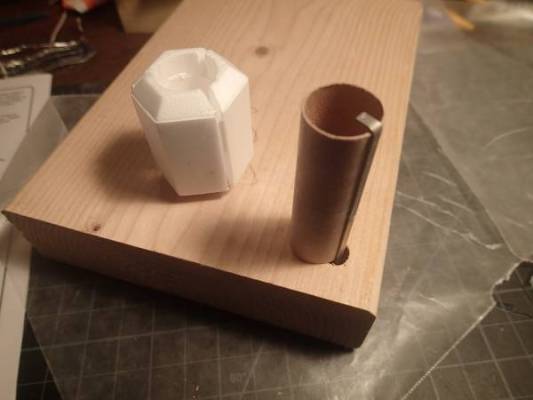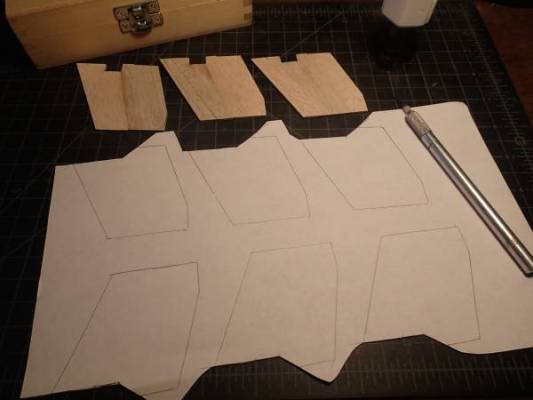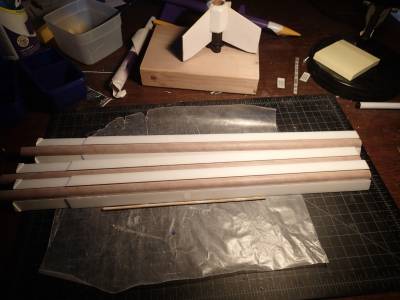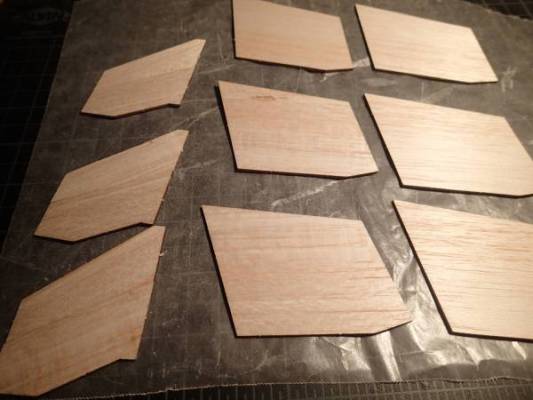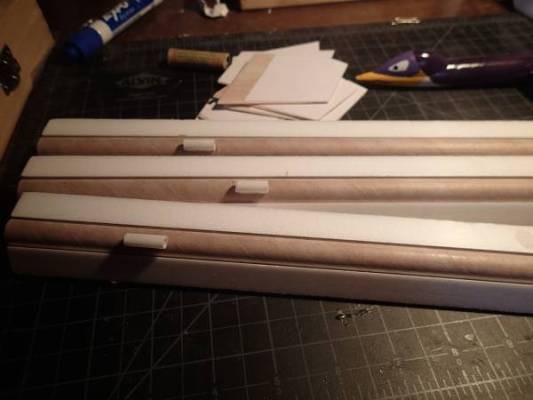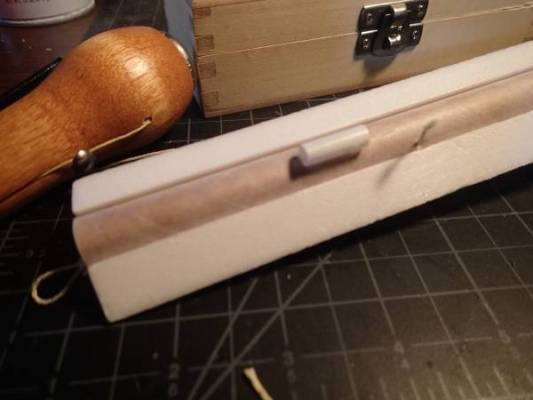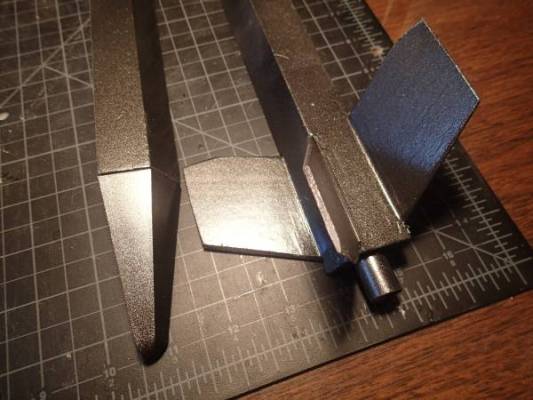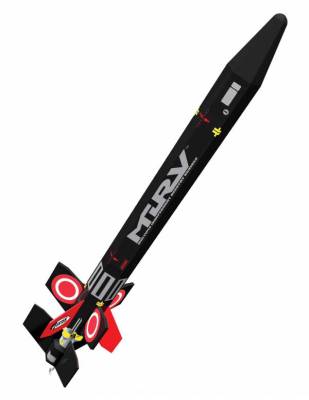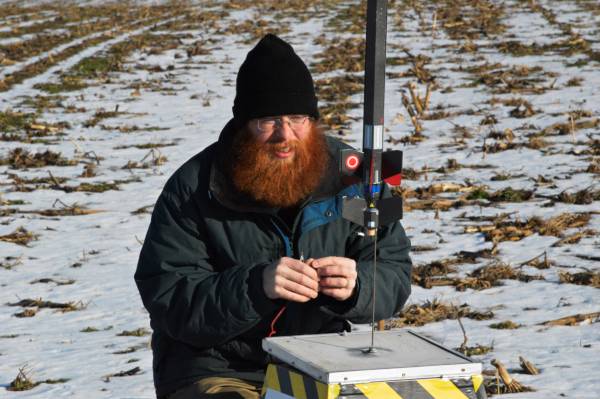Estes M.I.R.V.
By Eric Lofgren
2016-11-08
| Manufacturer: | Estes  | |
| Diameter: | 1.6400 inches | |
| Length: | 24.5000 inches | |
| Skill Level: | 3 | |
| Style: | Multi-Stage |
As a first try at documenting one of my builds, I've decided to photograph the process of building the Estes M.I.R.V., hopefully including some of the improvements suggested by Rich DeAngelis as I go.
First stage fins
2016-11-08
The three fins for the first stage of the M.I.R.V. are in two parts each which must be glued up, for no apparent reason other than to use a smaller piece of balsa. My piece of balsa on which these fin parts (parts A and B) were laser-cut was actually a glue-up of two skinnier pieces. The seam actually goes through a few of the fins. One of the pieces must have been much denser than the other, because on half the sheet, the laser cutting utterly failed to make it through the wood. Thus I spend longer than usual cutting out these fins, then I spent some time trying to match the pairs for weight. Sanded edges, glued up with Elmer's Carpenters Glue, and sat under a few volumes of the Grove's Dictionary of Music and Musicians (5th edition) to dry.

While waiting I also glued up the two pieces (H and G) of the staging manifold, using quite a lot of model cement (at the suggestion of Rich DeAngelis). I used Duco Cement with the green label, which is indicated "good on phenolic plastics," not polystyrene plastics.
Booster motor mount
2016-11-08
The next step is the assembly of the lower (booster) motor mount. Since I read that others had trouble sliding the motor tube into the foam mount before the glue set, I decided to help myself a little bit. While the glue dried on the motor hook, I drilled a 3/8" hole in a piece of 2x lumber (cedar, I think). This let me put the motor mount tube flat on a surface so I could push the foam piece straight down until flush, without pausing. I also used yellow glue which doesn't seize quite as quickly in my experience.
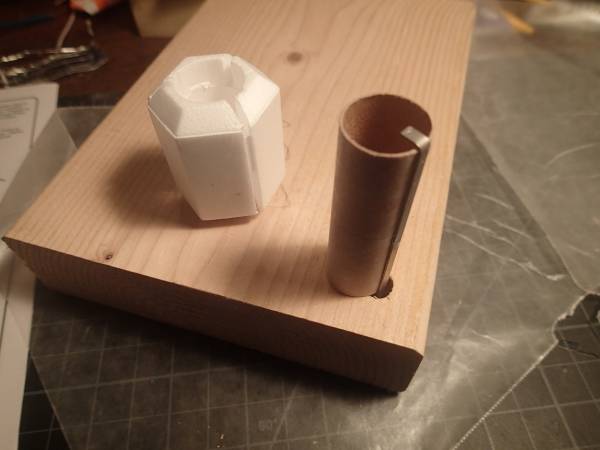
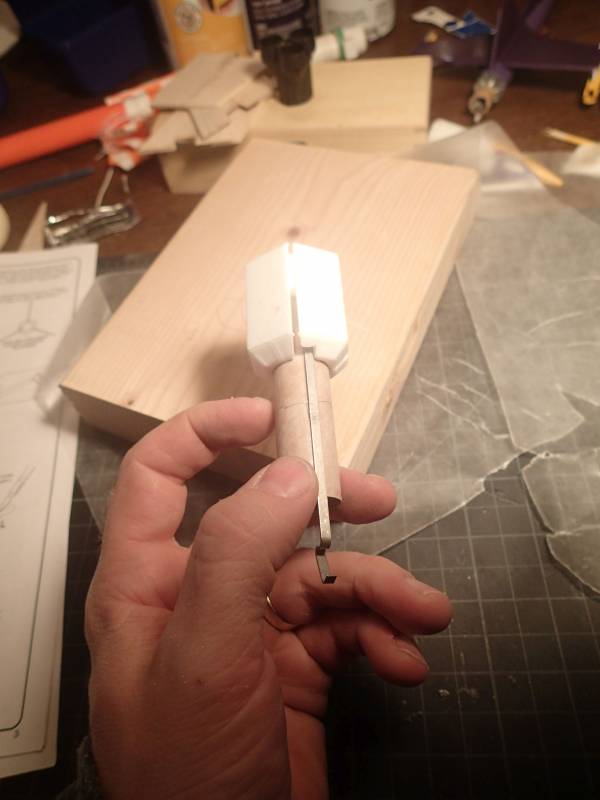
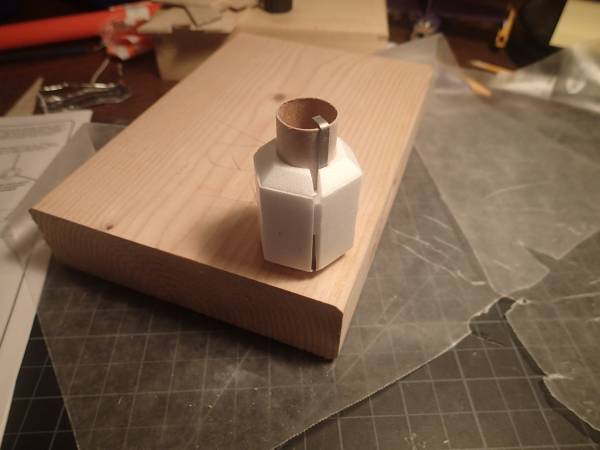
Then I glued the plastic part on the top:
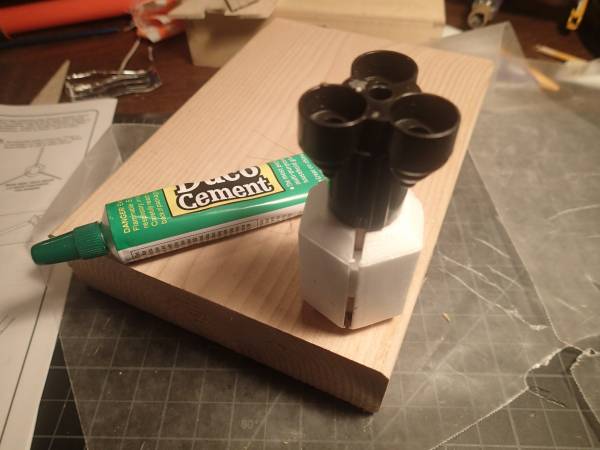
The next few steps will involve papering the lower fins.
Booster stage fins
2016-11-10
I started working on these fins - they tuck into slots in the foam so I wanted to leave a bit of the root edge unpapered. I cut a notch from the paper before gluing, spread white glue-all, rolled out the excess, trimmed and sanded to size. I used elmer's wood glue at the aft end of each fin and duco cement at the forward end where it contacts the plastic part. I'm leaving the launch lug standoff off for now; it's rectangular and I'm not sure which way it goes, plus I may have over-sanded it and I want to make sure it aligns with the upper lug when I get to it. The next step after that is supposed to be adding a 3/16" dowel for the upper stages, which I'd like to make longer, so I'm going to hold off on that too.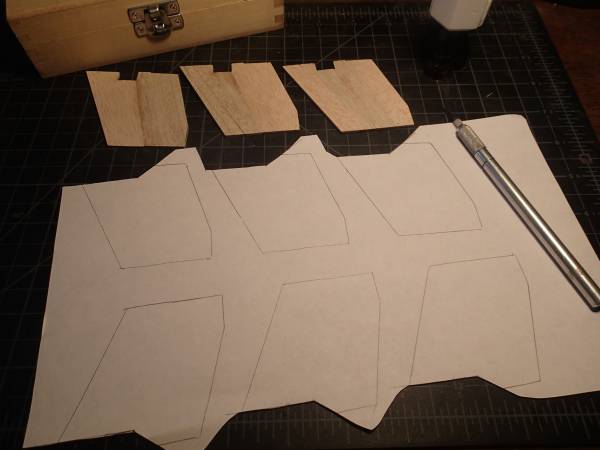
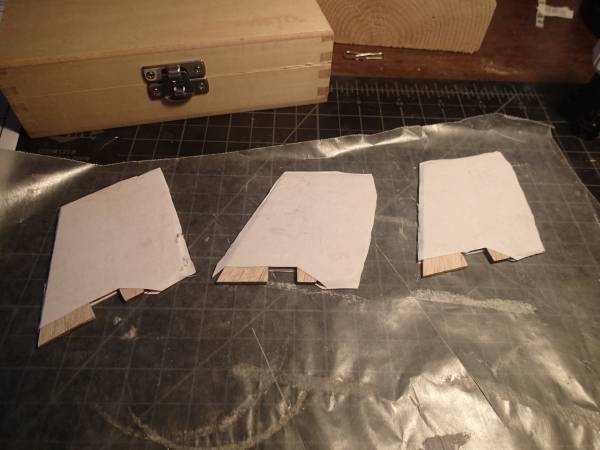
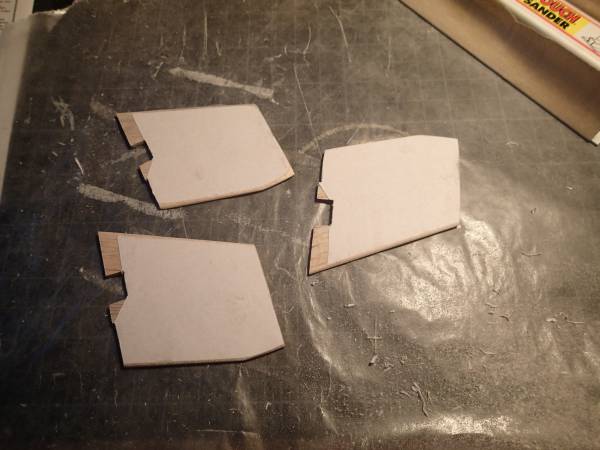
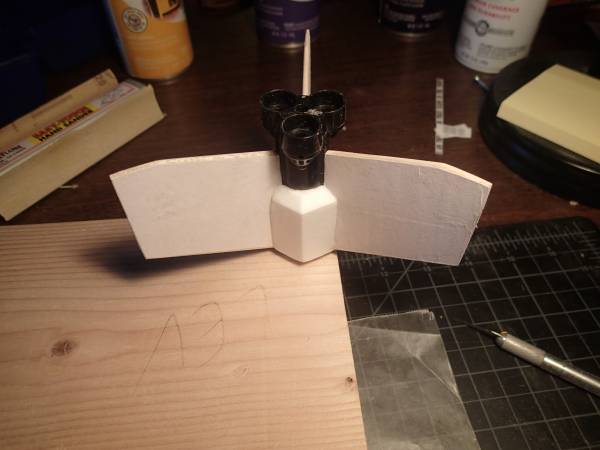
Beginning body tubes
2016-11-11
A quick update - gluing the BT5 body tubes into the styrofoam body segments, and gluing the plastic nose cone halves together. Next is all the fins for the upper stages, nine total, three of which have to be glued from smaller parts. I'm planning to paper all of them.
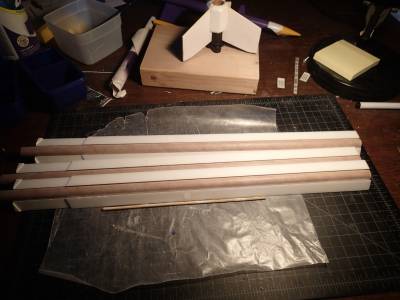
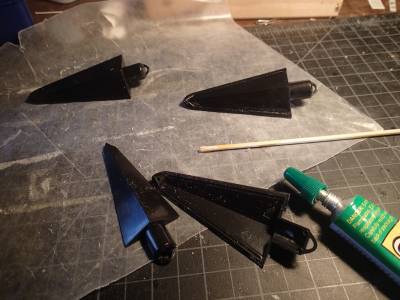
Upper stages fins
2016-11-12
For no apparent reason (again), three of the nine upper fins have to be glued together, so I did that first.
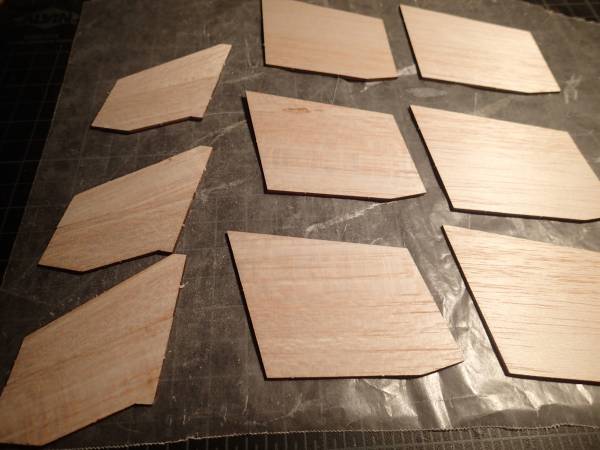
Paper on all nine fins then required a portion of the edge to be left uncovered, but on these it was a straight line, so I just glued them off the edge of the paper.
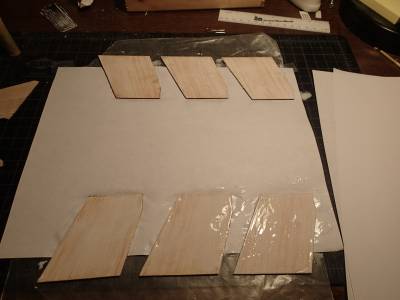
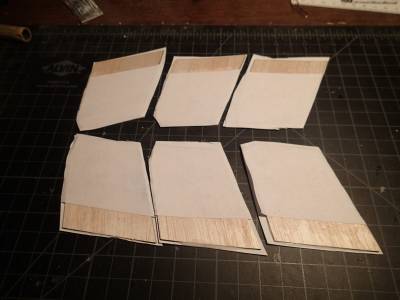
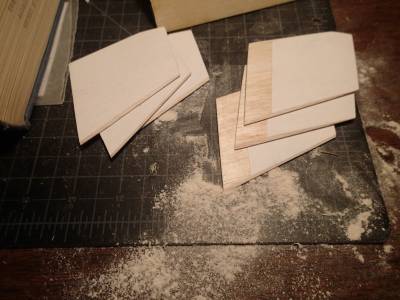
Same deal for the other three
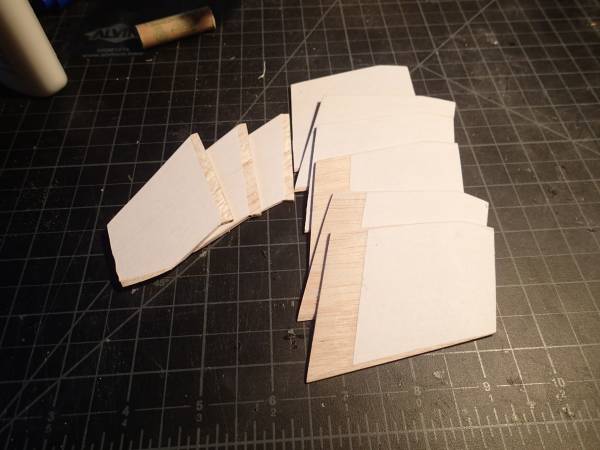
While I waited I glued in the engine blocks; next I'll install the dowel and launch lugs so I can get the fins lined up right.
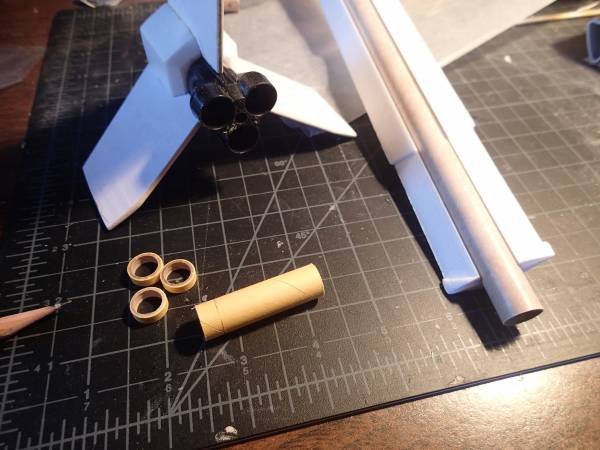
Internal launch lugs and fins
2016-11-14
With the fin papering complete I cut a long 3/16" dowel (probably around 16-17") to use instead of the one in the kit. I positioned the launch lugs near the top to hold the nose together more securely.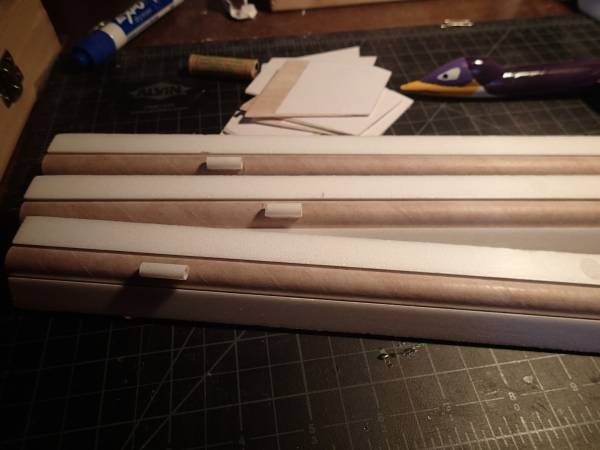
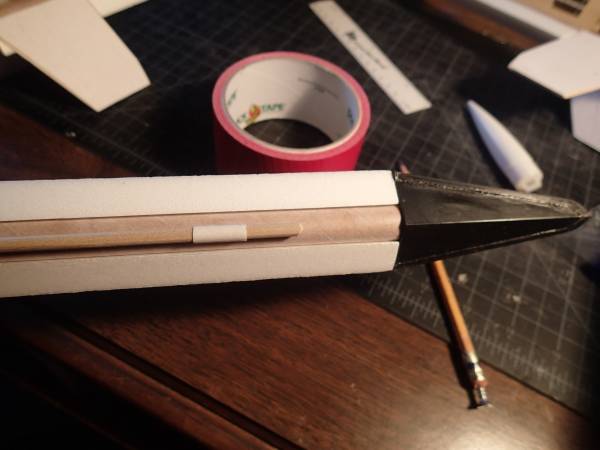
That done I began attaching the fins. I glued one of each pair of fins, then used the assembled rocket to align the other three.
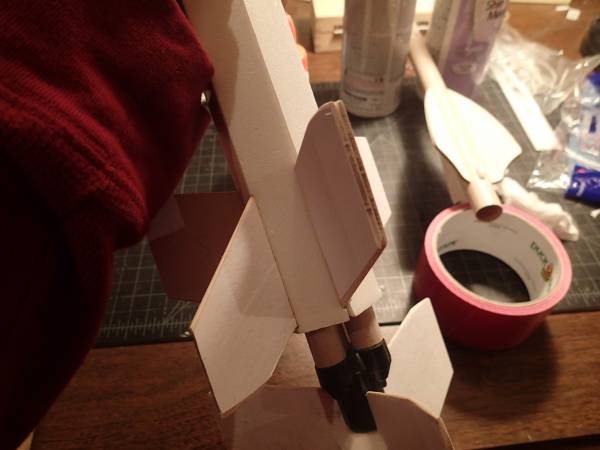
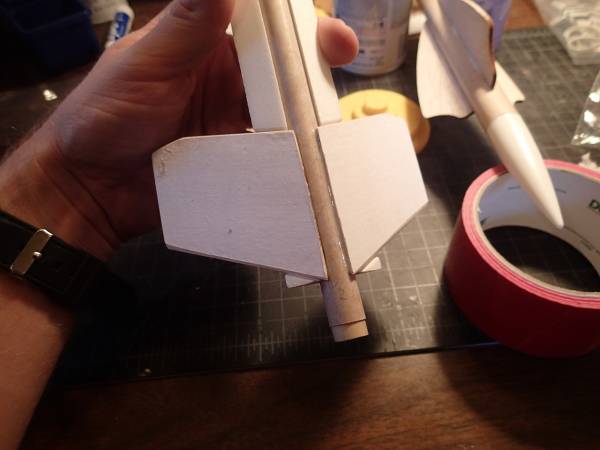
The third fin on each sub-rocket is easy, just stick it in the slot. With the internal rod assembly complete, I was able to confidently attach the lower launch lug standoff.
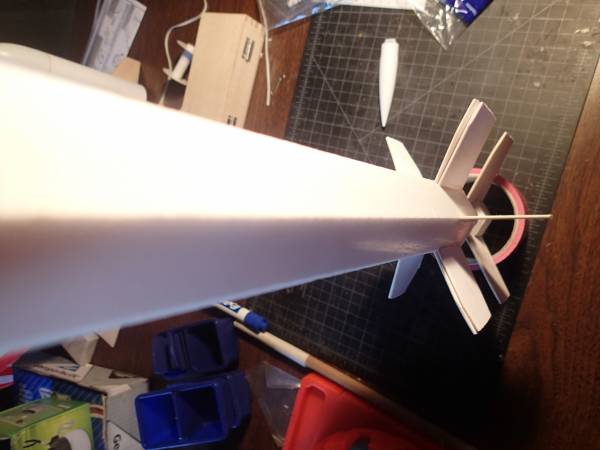
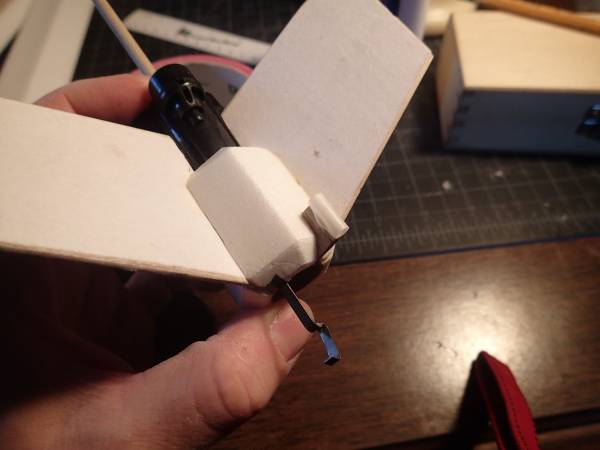
Shock cords
2016-11-18
I borrowed some ideas from various places for my shock cord mounts. I poked a hole through the body tube and fed some kevlar through, then glued it down in the crack between the foam and the BT. Once dry it feels plenty strong.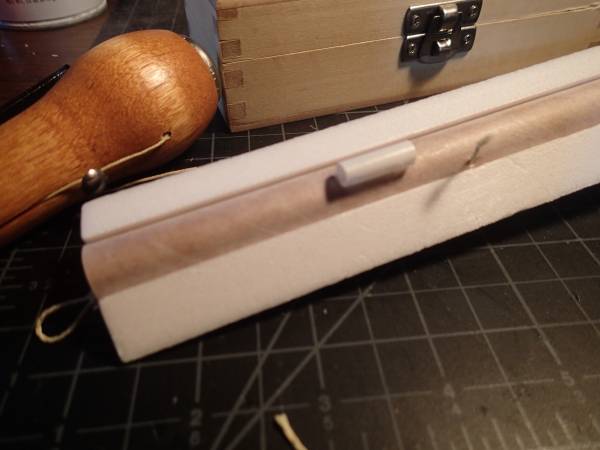
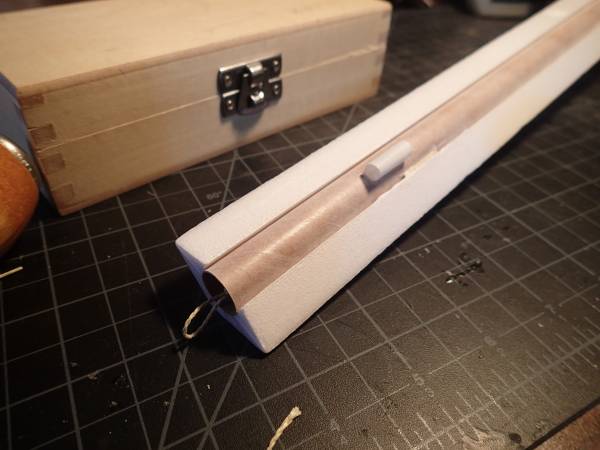
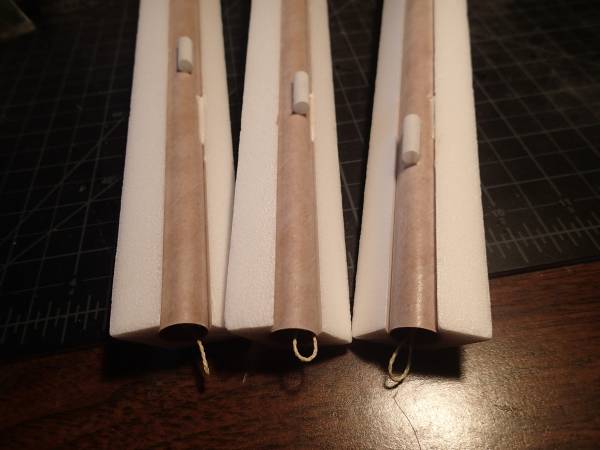
That done it's time to start finishing. I started with a coat of Krylon "Craft Foam Primer" that I found at Michaels. It's weird stuff, seems very watery, but it didn't eat the foam and it sands OK. I'm taping off and priming the fins with my usual rustoleum grey primer.
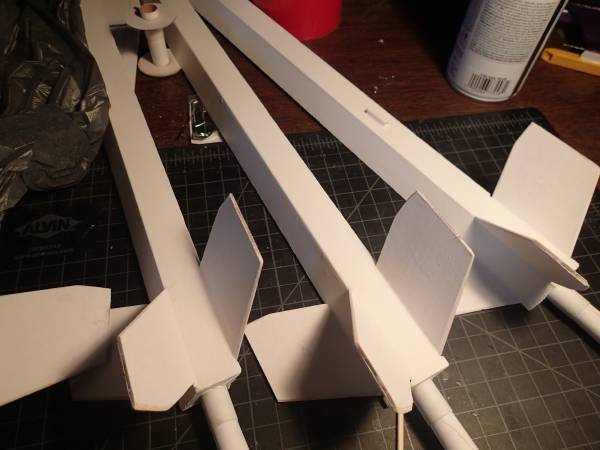
Painting
2016-11-21
Having painted the entire rockets with Krylon "Craft Foam Primer", and then the nose cones and fins with Rustoleum grey auto primer, I top-coated the entirety with Krylon Black "Shimmer Metallic" and while it for the most part looks good I had some weird bubbling on one of the nose cones that I'm going to have to sand down and redo. Unfortunately the temperature dropped by over 30 degrees (F) over the weekend and so painting is temporarily halted. I need to do the red bits too for the factory look. I've started work on a FlisKits Trifecta in the meantime.
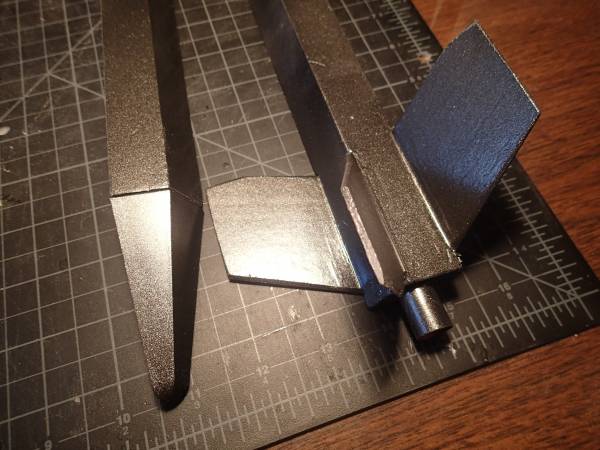
Decals
2016-12-06
I finished the paint and got to decals today. I'm, as usual, disappointed in Estes decals. They include only enough to cover the rocket from one angle, the angle they use for the photo. It's like when you see a fast-food burger on TV and you know they've scooched all the veggies to the camera side of the bun so it looks better. So, for example, I get four of the red and white roundels. Six would be good and is "implied" by the cover art. This kit had another problem which is that the decals used for the advertising pictures are much larger than the ones included. Here's a picture from jonrocket.com:
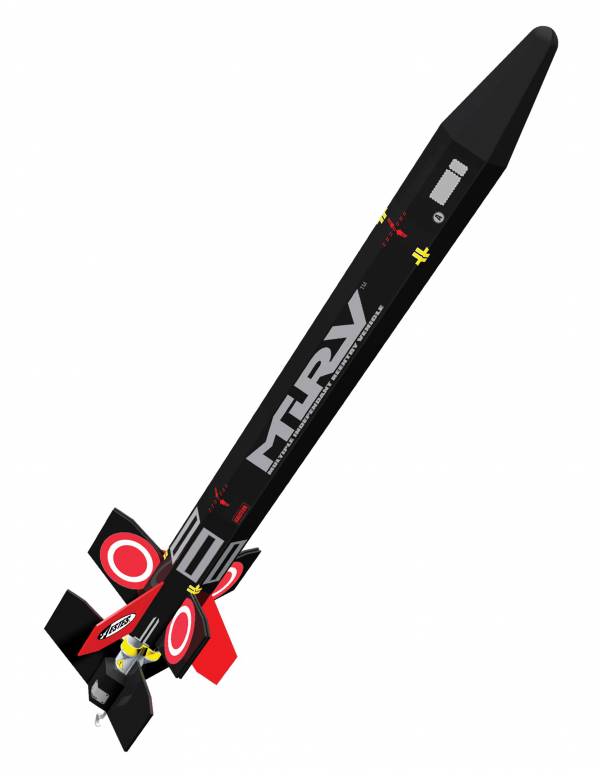
The roundels take up the whole fins (indeed, they don't even fit). See the yellow decals which seem to attach the parts together? (note: I got five of these. Plenty of room for six on the sheet!) And see the "windows" near the nose cones?
Now here's my rocket:


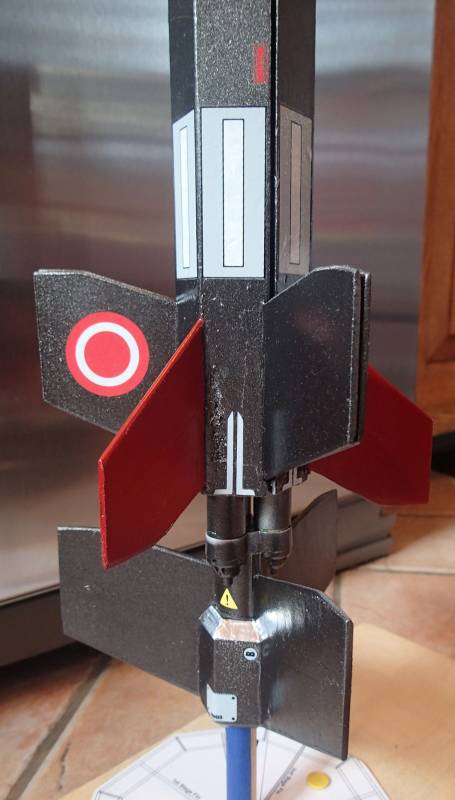
I'm adding crepe-paper streamers to all four parts (not sure the one twisted around the internal launch rod will work, but I'll try it). Hopefully I'll get a launch in this weekend.
New Years Launch
2017-01-01
We had a beautiful day today and I was able to launch several "new" rockets including the M.I.R.V.
I used a B6-0 and three A10-3T. All four pieces had red crepe-paper streamers to help with recovery, and I was launching on a snowy cornfield so I had high hopes.
The rocket weathercocked a lot during the booster stage, then all three upper stages launched perfectly, but a bit horizontal and straight into the sun, and all three appeared to spiral off. (They did not stay together at all, like others have observed.) We heard the "pop pop pop" of three ejection charges firing. I completely lost track of the booster somewhere in here. We took off running to find all the pieces; the first two were found quickly but the third had torn its streamer and took us a long hunt before my five-year-old stumbled across it. The booster was found just downwind of the launch pad, maybe 15 feet away.
This was a nail-biter of a launch but all went well and I can recommend this rocket if you can stand the cost of using four engines on every launch.
I would recommend the addition of streamers or anything else to help find all the parts after launch.
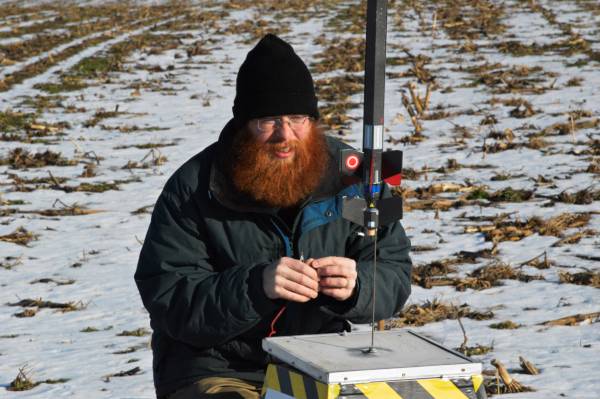
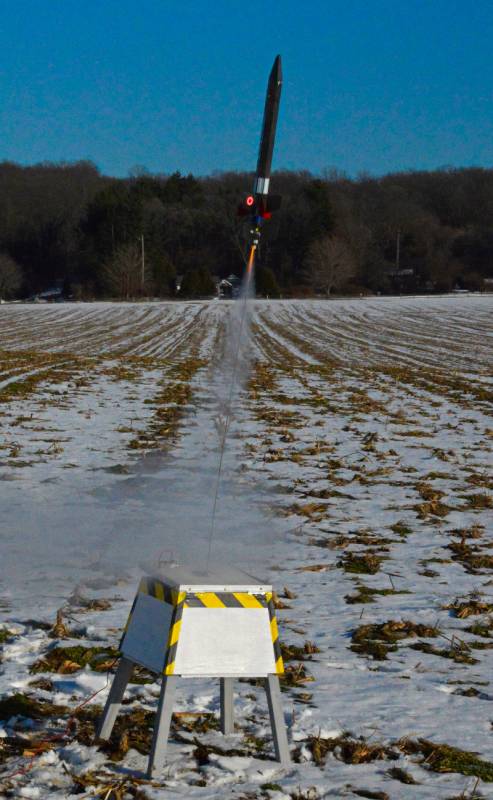
Stuck engines
2017-01-10
While I did recover all parts of the M.I.R.V. I have found the mini engines got severely stuck in the upper-stage body tubes. One came out after an overnight out in the garage but two are still stuck. Don't add any extra tape to make them friction fit! The wrap on the outside is plenty.
 |
 |
